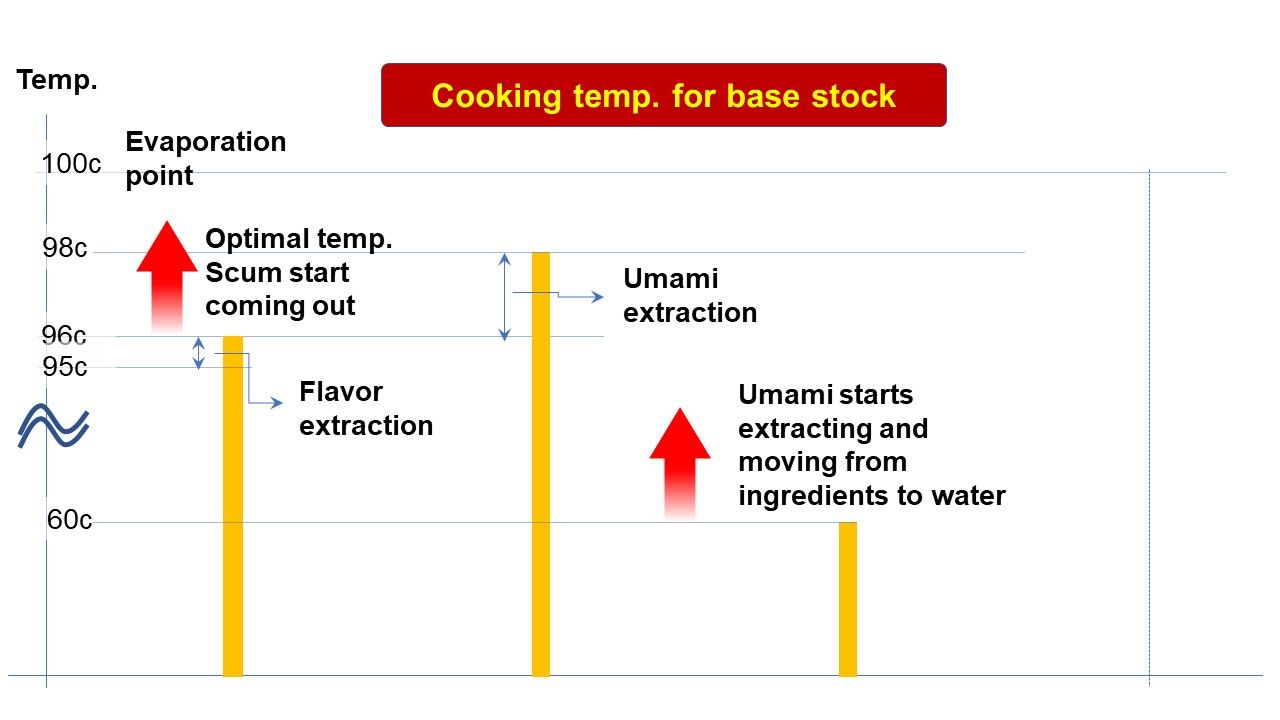Control temperature to make the kind of ramen desired
What kind of ramen do you want to make? For example, the bowl of ramen in the image is served with different types of charsiu (slices of meat). What they have in common is they were cooked at low temperatures. In traditional ramen cooking, charsiu tends to be hard and dry as it is cooked at a high temperature. Cooking meat at a high temperature may burn and dehydrate the meat if cooked for a long period of time. Even toppings can taste better by controlling temperature.
Similarly, depending on the type of ramen soup you want to make, we need to control temperature. If you are making light ramen soup, the kind of soup you see in the image, translucent or clear soup. On the other hand, if you want to make cloudy soup like the famous Hakata tonkotsu soup, then you need to control the cooking temperatures. Making base stocks cloudy, you would need to cook the stock at high heat with the temperature going over 96 degrees Celsius continuously for long hours. But if you want to make clear stock, you want to keep cooking the stock at a lower heat with the temperature hovering around 60-80 degrees Celsius.
And when you finish cooking your base stocks and store them in a refrigerator, they need to be cooled down below a certain temperature.
How do we measure cooking temperatures? We use different types of thermometers. There's very useful thermometers with great functions, such as time-alarm-temperature that alarms when the cooking temperature reaches a set point. You can also use the one with a extension cable and a thermometer stick that you can insert into a meat to get the core temperature. There are many types of thermometers on market. Please check and choose the one that suits your needs. And, this is a part of the Digital Cooking Method that we teach at this ONLINE Ramen School. You can start learning and making your own craft ramen today.
Similarly, depending on the type of ramen soup you want to make, we need to control temperature. If you are making light ramen soup, the kind of soup you see in the image, translucent or clear soup. On the other hand, if you want to make cloudy soup like the famous Hakata tonkotsu soup, then you need to control the cooking temperatures. Making base stocks cloudy, you would need to cook the stock at high heat with the temperature going over 96 degrees Celsius continuously for long hours. But if you want to make clear stock, you want to keep cooking the stock at a lower heat with the temperature hovering around 60-80 degrees Celsius.
And when you finish cooking your base stocks and store them in a refrigerator, they need to be cooled down below a certain temperature.
How do we measure cooking temperatures? We use different types of thermometers. There's very useful thermometers with great functions, such as time-alarm-temperature that alarms when the cooking temperature reaches a set point. You can also use the one with a extension cable and a thermometer stick that you can insert into a meat to get the core temperature. There are many types of thermometers on market. Please check and choose the one that suits your needs. And, this is a part of the Digital Cooking Method that we teach at this ONLINE Ramen School. You can start learning and making your own craft ramen today.

Temperature can ruin your ramen noodles too
Discover your Ramen potentials here
By just signing up (it is FREE!), you can access to many resources that are free of charge. You can start learning ramen. Weekly Free Workshops are such free resources that you can attend to learn many aspects of ramen business.
Write your awesome label here.
Write your awesome label here.
The shortest path to building your strong ramen business
With Ramen Basic Complete Course, you'll have immediate access to the valuable essences of authentic ramen craftmanship that is available 24/7 anywhere in the world. Start creating your ramen brand today.

